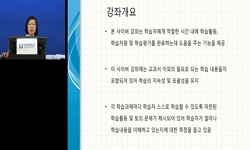Purpose: The purposes of this study are finding the elements for a fast determination of the need for a transfusion to a multiple trauma patient arriving at this clinic in the initial stage establishing objective bases for a doctor in an emergency dep...
http://chineseinput.net/에서 pinyin(병음)방식으로 중국어를 변환할 수 있습니다.
변환된 중국어를 복사하여 사용하시면 됩니다.
- 中文 을 입력하시려면 zhongwen을 입력하시고 space를누르시면됩니다.
- 北京 을 입력하시려면 beijing을 입력하시고 space를 누르시면 됩니다.

다발성 외상 환자에서 Emergency Room Transfusion Score (ETS)를 이용한 응급수혈의 예측인자 = Factors for Predicting the Need for an Emergency Blood Transfusion to a Multiple Trauma Patient Using Emergency Room Transfusion Score (ETS)
한글로보기https://www.riss.kr/link?id=A100412207
- 저자
- 발행기관
- 학술지명
- 권호사항
-
발행연도
2015
-
작성언어
-
- 주제어
-
KDC
500
-
등재정보
KCI등재
-
자료형태
학술저널
-
수록면
1-8(8쪽)
- 제공처
- 소장기관
-
0
상세조회 -
0
다운로드
부가정보
다국어 초록 (Multilingual Abstract)
Purpose: The purposes of this study are finding the elements for a fast determination of the need for a transfusion to a multiple trauma patient arriving at this clinic in the initial stage establishing objective bases for a doctor in an emergency department to determine the need for a transfusion immediately after a patient has arrived at the emergency department, and providing treatment by considering various factors based on the nine criteria suggested in the emergency room transfusion score (ETS). Methods: This study was conducted on 375 multiple-trauma patients who visited the Chosun University Hospital Emergency Medical Center and activated the Emergency Trauma Team from January 2010 to December 2013. The patients were divided into the transfused group and the non-transfused group by retrospectively analyzing their medical records. Subsequently, the medical records were examined using the nine items suggested by the ETS and the results were analyzed. Results: Three hundred seventy-five patients with multiple traumas visited the Chosun University Hospital Emergency Medical Center and activated the Emergency Trauma Team. Among them, 258 died and 117 recovered and left the hospital. The deceased patients consisted of 182 males and 76 females with an average age 45. Of the 375, 165 were transferred from other hospitals, and 245 were blunt trauma patients. One hundred sixty-nine patients were injured in traffic accidents, and 119 of those 169 who had systolic blood pressure less than 90 mm Hg died. Two hundred twenty-six (60.3%) out of the 375 patients with multiple traumas receivedan emergency blood transfusion and their average age was 48. The 375 patients consisted of 156 males, 151 who had been transferred from other hospitals, 218 who presented with blunt trauma, 134 who had been injured in traffic accidents, 156 who had a systolic blood pressure less than 90 mm Hg, 134 who scored higher than 9 points on the GCS, and 162 who had a stable pelvic fracture of these 143 died. Conclusion: During this study, 226 (60.3%) out of the patients with multiple traumas received an emergency blood transfusion. After analyzing the results related to emergency blood transfusion by using ETS, we found that an emergency blood transfusion had to be prepared quickly when patients were transferred from other hospitals when the systolic blood pressure was less than 90 mmHg. when abnormalities had been detected by ultrasonography and when the patient presented with a stable pelvic fracture. [ J Trauma Inj 2015; 28: 1-8 ]
동일학술지(권/호) 다른 논문
-
응급 수술을 시행한 신경외상 환자들에 있어 전염성 바이러스 감염의 유병율에 대한 분석
- 대한외상학회
- 남경협 ( Kyoung Hyup Nam )
- 2015
- KCI등재
-
- 대한외상학회
- 장성욱 ( Sung Wook Chang )
- 2015
- KCI등재
-
외측 반월상 연골에서 발생한 외상성 완전 방사상 파열 자가 치유의 자연 경과: 증례 보고
- 대한외상학회
- 심재앙 ( Jae Ang Sim )
- 2015
- KCI등재
-
지방 근막 피판을 이용한 외상성 족부 내측면의 연부 조직 결손의 치료: 증례보고
- 대한외상학회
- 김민범 ( Min Bom Kim )
- 2015
- KCI등재




 ScienceON
ScienceON KISS
KISS







